MARIANI’S
Virtual
Gourmet
December 8,
2019
NEWSLETTER
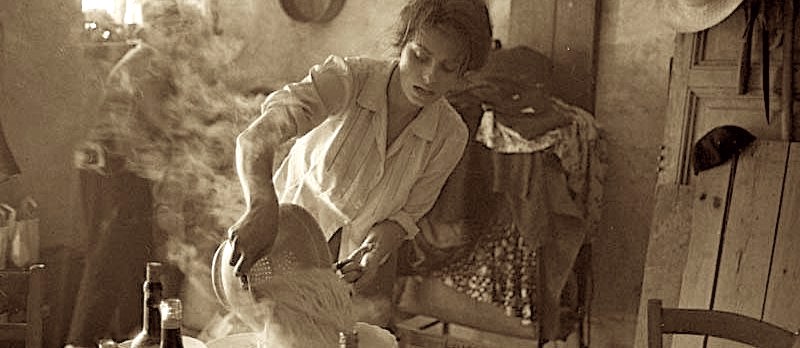
❖❖❖
IN THIS ISSUE
EATING AROUND SCOTTSDALE, AZ
By John Mariani
NEW YORK CORNER
PORTER HOUSE BAR AND GRILL
By John Mariani
NOTES FROM THE SPIRITS LOCKER
SOME WARMING SPIRITS FOR WINTER
By John Mariani
❖❖❖
EATING AROUND
SCOTTSDALE, AZ
By John Mariani
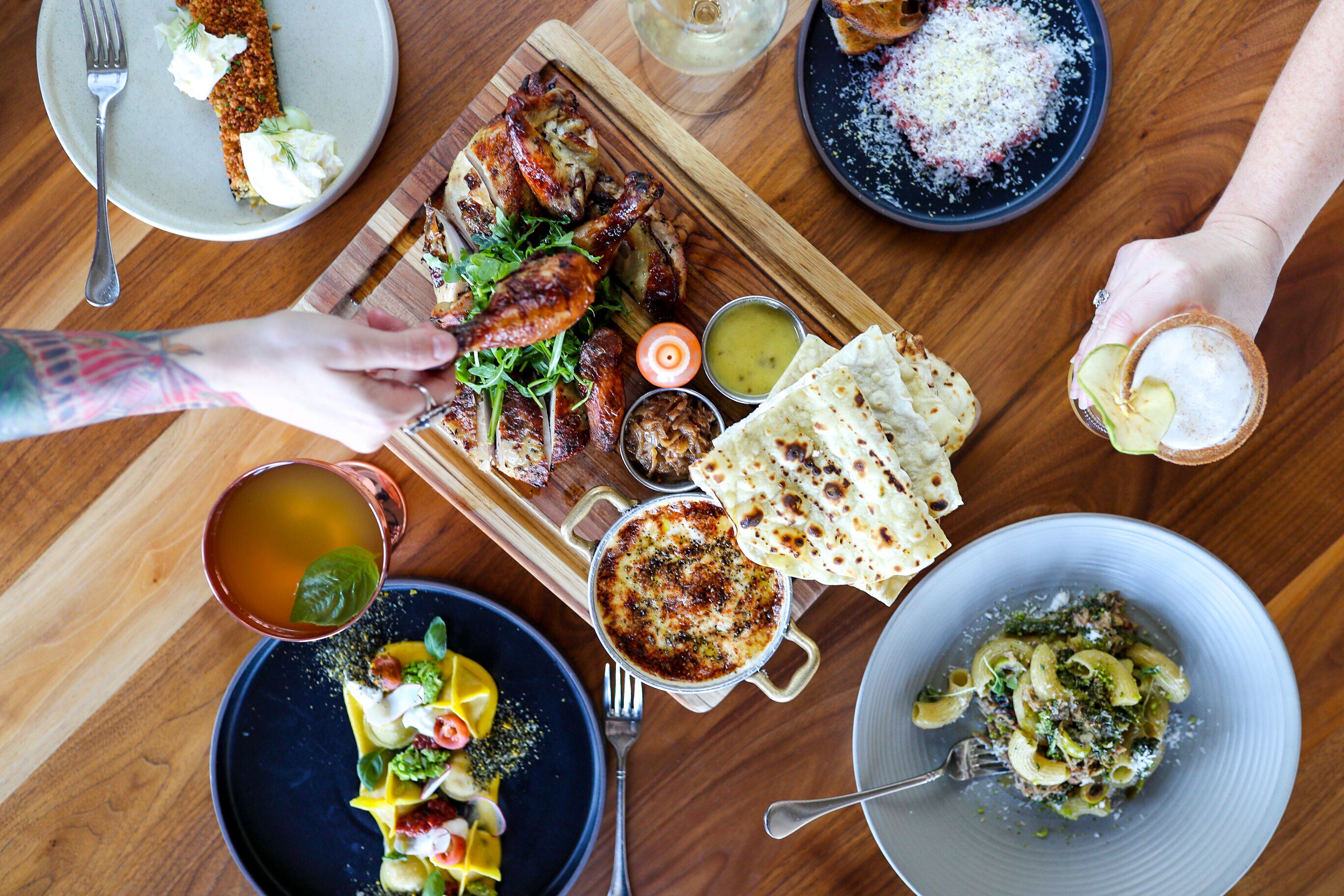
FAT OX
I’ve been visiting Scottsdale, Arizona, for four decades and have seen its gastronomic diversity grow to include some of the region’s best restaurants. My first dining experience in Scottsdale was in 1977 at a very good French restaurant called Étienne’s, with a very large wine cellar, that I would enthusiastically write about for Travel & Leisure later that year. Since then French restaurants have given way to all kinds of others and on my most recent visit I found some excellent new places I am eager to tell you about.
FAT OX
6316 North Scottsdale Road
480-307-6900
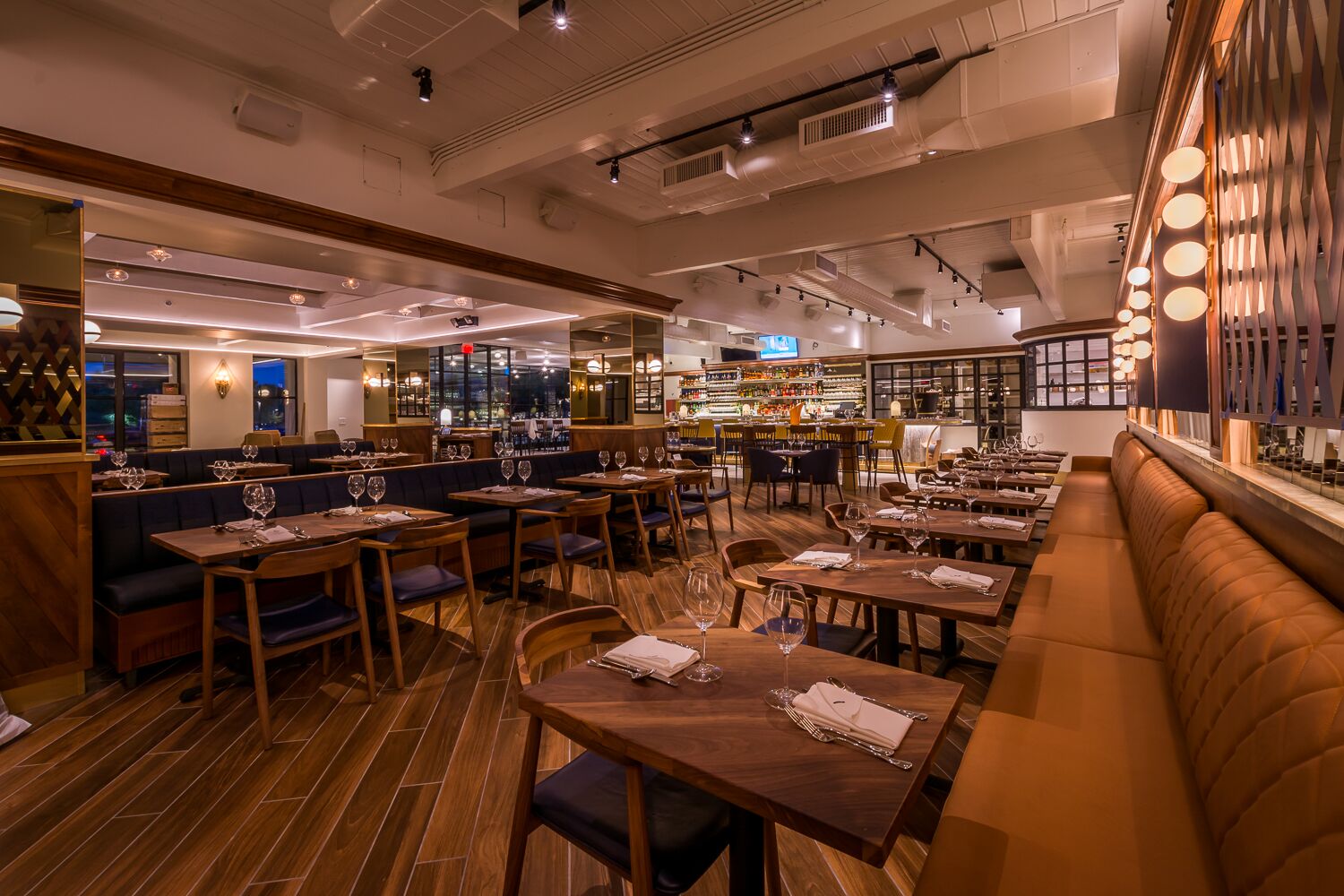 Chef
Matt Carter, Phoenix-born, trained in French
cuisine at La
Chaumière, moved to France to learn more and
returned to Arizona to chef at The Mission, Zinc
Bistro and The House Brasserie. Now, with
partners Brian Raab and Mark Drinkwater, he is
doing a kind of southwestern take on an Italian
steakhouse, and the flavors are big and intense
and delicious. It’s food to share, and to tell
people about after your first or tenth visit.
Chef
Matt Carter, Phoenix-born, trained in French
cuisine at La
Chaumière, moved to France to learn more and
returned to Arizona to chef at The Mission, Zinc
Bistro and The House Brasserie. Now, with
partners Brian Raab and Mark Drinkwater, he is
doing a kind of southwestern take on an Italian
steakhouse, and the flavors are big and intense
and delicious. It’s food to share, and to tell
people about after your first or tenth visit.
Named
after Italy’s Blue Grasso cattle, Fat Ox is a big,
sprawling, handsome restaurant that is very
popular in town, but with so many hard surfaces,
that popularity can make it very loud upfront, so
ask for a table in the far more appealing rear of
the dining room.
Pastas
are always a focus of Italian restaurants,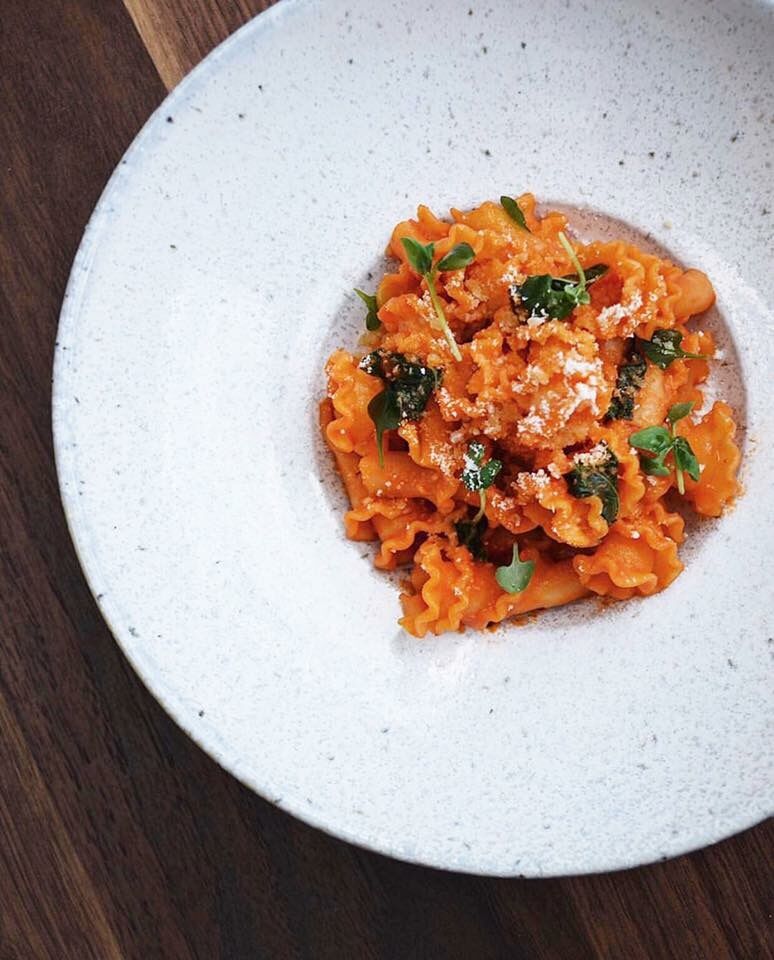 but Fat
Ox has a fine antipasti selection, too, including
juicy veal meatballs with tomato, parmigiano and
basil ($10) and
a lavish selection of charcuterie like Prosciutto
di San Daniele, finocchiona, coppa, aged calabrian
pecorino, Gorgonzola, crescenza cheeses and
marinated olives ($18).
There are also two kinds of ricotta ($12).
but Fat
Ox has a fine antipasti selection, too, including
juicy veal meatballs with tomato, parmigiano and
basil ($10) and
a lavish selection of charcuterie like Prosciutto
di San Daniele, finocchiona, coppa, aged calabrian
pecorino, Gorgonzola, crescenza cheeses and
marinated olives ($18).
There are also two kinds of ricotta ($12).
I found no fault with any of
the pastas I did try—well, maybe the 25-layer
lasagna is a bit over the top—from one with a
cured pork sugo,
broccolini, tomato, ricotta
salata, and basil pesto ($18), a
well-wrought tajarin cacio
e pepe ($16) to malloreddus
with a lamb ragù,
rosemary, almond, shishito peppers (right; $18).
The formidable, table-sagging bistecca
alla fiorentina ($120) is a feast for three
or four people. But I wouldn’t pass up the
beautifully roasted chicken either.
For
dessert by all means share the lemon tart or the
gianduja chocolate tart with fennel brittle (both
$9).
 HEARTH ‘61
HEARTH ‘61
Mountain Shadows Resort
5445 East Lincoln Drive
Paradise Valley
480-624-5458
I’ve
known Charles “Chuck” Wiley for a long time and
have always considered him in the very top rank of
the area’s chefs. A New Jersey boy, he came west
in 1973, starting out as a dishwasher in Lake
Tahoe, Utah, followed by stints in Alaska and Salt
Lake City. I
met him when he moved to Arizona in 1989 to become
chef at The Boulders, then at Sanctuary Camelback
Mountain Resort. He is now executive chef at
Mountain Shadows Resort in Scottsdale, where his
style of cuisine is as imaginative as it is firmly
based on classic cuisine. (His hero was Jacques
Pépin, who wrote La Technique.)
Architectural
Digest pronounced
the bar at 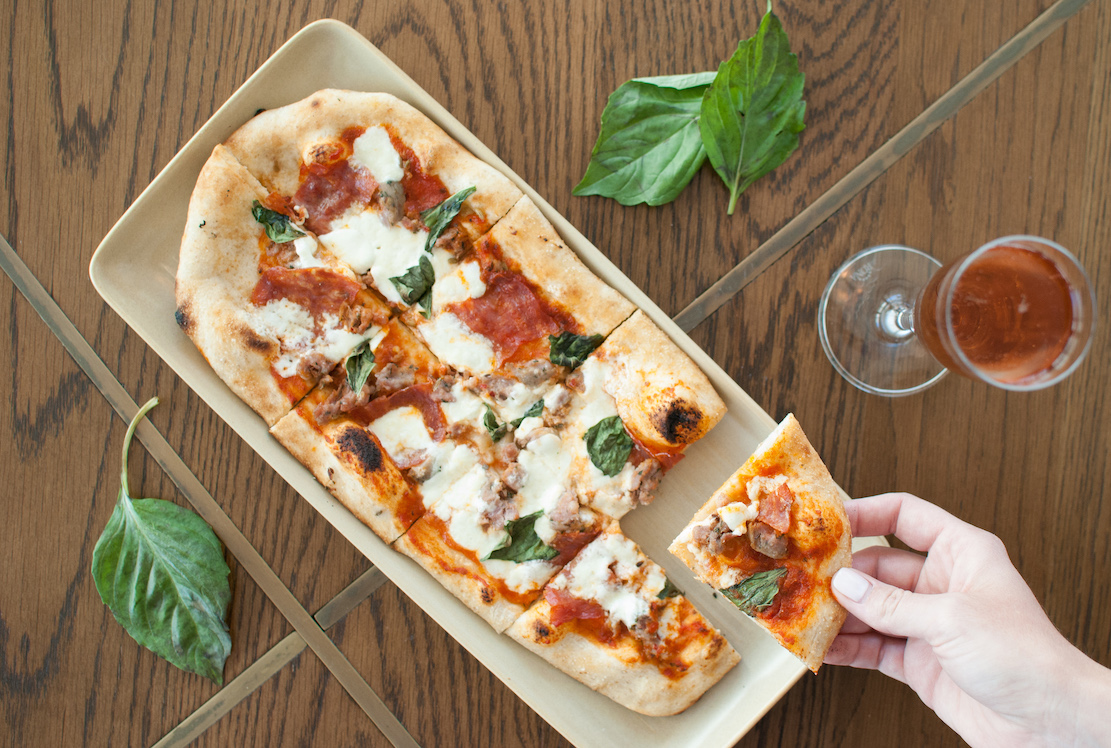 the resort
"The Most Beautifully Designed Bar in Arizona," and the
dining room is done in surfaces and shapes that
combine the look of the 1960s with the lighting of
2020, in cool blues and grays.
the resort
"The Most Beautifully Designed Bar in Arizona," and the
dining room is done in surfaces and shapes that
combine the look of the 1960s with the lighting of
2020, in cool blues and grays.
I let Chuck (below) cook
for me from all around his lunch and dinner menus,
beginning with a superb lobster bisque with leeks
and a lemon crème fraîche. An arugula and avocado
salad with citrus, mint, radish, cashews and
ginger honey vinaigrette might have been mundane
had it not been for the absolute freshness of the
ingredients, as was the case with lustrous ahi
tuna tartare with Persian cucumber, a dash of
shishito peppers, shaved turnips and puffed rice
to add further texture ($16).
 There is a
spot on the menu for flatbreads, and I thoroughly
enjoyed a pasta dish of sweet shrimp and hot chorizo
cavatelli with
oven-dried tomatoes, broccolini, chili flakes and
roasted garlic cream ($12) as one of the best
Italian dishes I’ve had in Scottsdale.
There is a
spot on the menu for flatbreads, and I thoroughly
enjoyed a pasta dish of sweet shrimp and hot chorizo
cavatelli with
oven-dried tomatoes, broccolini, chili flakes and
roasted garlic cream ($12) as one of the best
Italian dishes I’ve had in Scottsdale.
Wiley buys his seafood from
Chula (see below), based on what’s best at the
moment. When I dined there this summer,
line-caught swordfish took on all sorts of flavor
levels from hot green harissa, pickled red onion,
roasted mushrooms and blistered radish ($32). Niman
Ranch tenderloin of beef showed Wiley’s way with a
red wine demi-glace and bleu cheese fondue.
For dessert, you can’t
miss with carrot cake with toffee ice cream and rum.
The view of the Paradise Valley landscape makes
you linger at Hearth ’61, while the food will
bring you back again and again.
 CHULA SEAFOOD
CHULA SEAFOOD
8015 East Roosevelt Street
460-621-5121
You may have noticed that Arizona
is landlocked, so seafood is not, perhaps, what
leaps to mind when thinking of eating out in
Scottsdale.
But thanks to the Heflin family, which runs
Chula Seafood, which began in San Diego ten years
ago, the best seafood out of the Pacific comes
east to Arizona.
The Heflins's boat, Chula,
out of Point Loma, Calif., specializes in
harpoon-caught and deep-sea buoy fishing and they
have been selling retail sine 2015. Jon Heflin has
headed the Arizona stores in Scottsdale and
Phoenix for a year now and has made Chula the
foremost supplier of seafood to the region.
At the Scottsdale store there
are tables, a counter displaying the day’s catch
and a blackboard menu along with a printed one.
When you can’t smell anything fishy in a seafood
store, you know the product is as fresh as can be
found.
It’s a sweet little spot that
looks as if it was unpacked from a port town on
Cape Cod, with drawings of fish species, many of
which will be  on the menu, along with
smoked fish and poke by the pound. They do bring
in salmon from Faroe Island, Denmark, and scallops
from New Bedford, Massachusetts, but the Pacific
offerings are the most interesting, from
California halibut and swordfish to albacore tuna.
on the menu, along with
smoked fish and poke by the pound. They do bring
in salmon from Faroe Island, Denmark, and scallops
from New Bedford, Massachusetts, but the Pacific
offerings are the most interesting, from
California halibut and swordfish to albacore tuna.
Order
from the counter, sit down and enjoy a Thai peanut
noodle bowl with tuna ($14-$18) or sweet &
sour poke with salmon ($14-$ 18), or perhaps a
ceviche bowl of white fish ($14-$18) or a confit
of tuna sandwich ($14). Everyday two-dollar shucked
oysters are available.
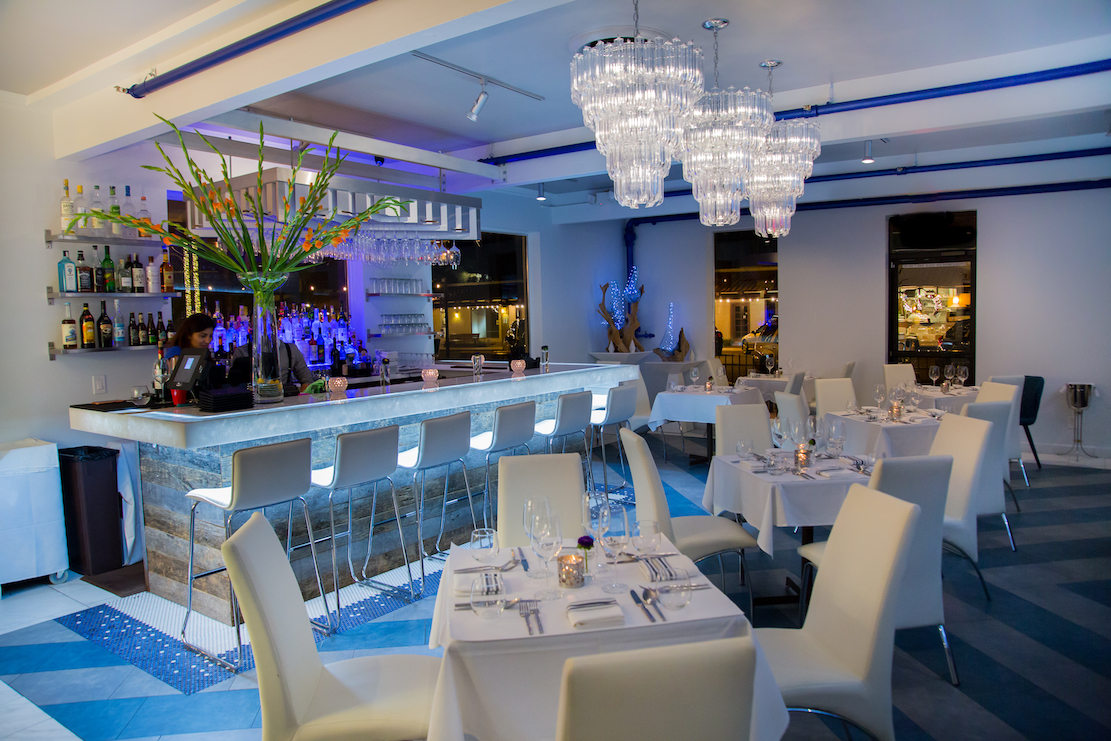 SEL
SEL
7044 East
Main Street
480-949-5296
Photos by Debbie Wolvos
Sel
looks smaller than it really is for a 100-seat Old
Town restaurant, and its intimacy is a large part
of its charm and character, which you can tell
upon entering the colorfully lighted dining room,
where Chef Branden Levine serves a highly
personalized four-course $90 prix fixe dinner. In
cooler weather, which for Arizonans seems to be
anything under 85 degrees, there are outdoor
tables.
The menu can change, not on a
whim but on what Levine finds in the market, so
the first course 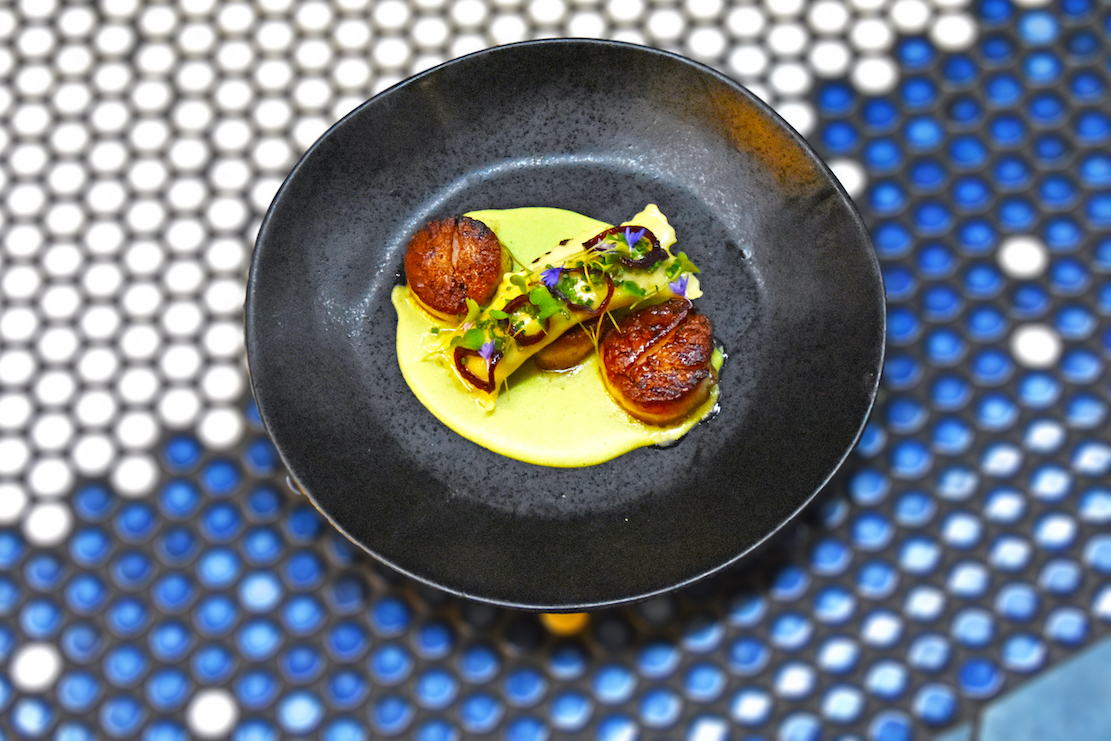 might be
spiced smoked beef and or king salmon tartare with
a sous-vide egg and tangerine vinaigrette ($21 a
la carte), then move on to porcini
stuffed ravioli with pine nuts and a
sunchoke-fennel puree ($19). A third course might
include roasted matsutake mushroom ramen ($18) or
a sea urchin bisque with crispy prawn ($25). The
fourth course offers a cioppino of scallops,
langoustine, crispy–skin barramundi, lobster foam
and tomato broth ($55) or grilled octopus with
merguez-studded Bolognese ($55).
might be
spiced smoked beef and or king salmon tartare with
a sous-vide egg and tangerine vinaigrette ($21 a
la carte), then move on to porcini
stuffed ravioli with pine nuts and a
sunchoke-fennel puree ($19). A third course might
include roasted matsutake mushroom ramen ($18) or
a sea urchin bisque with crispy prawn ($25). The
fourth course offers a cioppino of scallops,
langoustine, crispy–skin barramundi, lobster foam
and tomato broth ($55) or grilled octopus with
merguez-studded Bolognese ($55).
Desserts are
rich and unusual, like the foie gras ice cream
sandwich with Armagnac soaked dates and hazelnut
praline ($18) along with a more traditional
tiramisù with dulce de
leche gelato ($18).
Open Tues.-Sat. for
dinner.
By John Mariani
BAR AND GRILL
212-823-9500

When
the vast Time-Warner Center at Columbus Circle
was looking for tenants, many restaurateurs
expressed doubts that people would want to
traipse up and down escalators, past clothing
boutiques and eyeglass shops, to dine there. By
attracting Thomas Keller to open Per Se and Masa
Takayama to open Masa, fears that the premises
would be occupied by chain restaurants owned by
Midwestern corporations eased, and a number of
upscale restaurateurs took a chance. Not all
succeeded: Jean-Georges Vongerichten, whose
Jean-Georges flagship was across the street in
the Trump building, signed to do a steakhouse at
Time-Warner that looked designed by the Addams
Family. It didn’t last long.
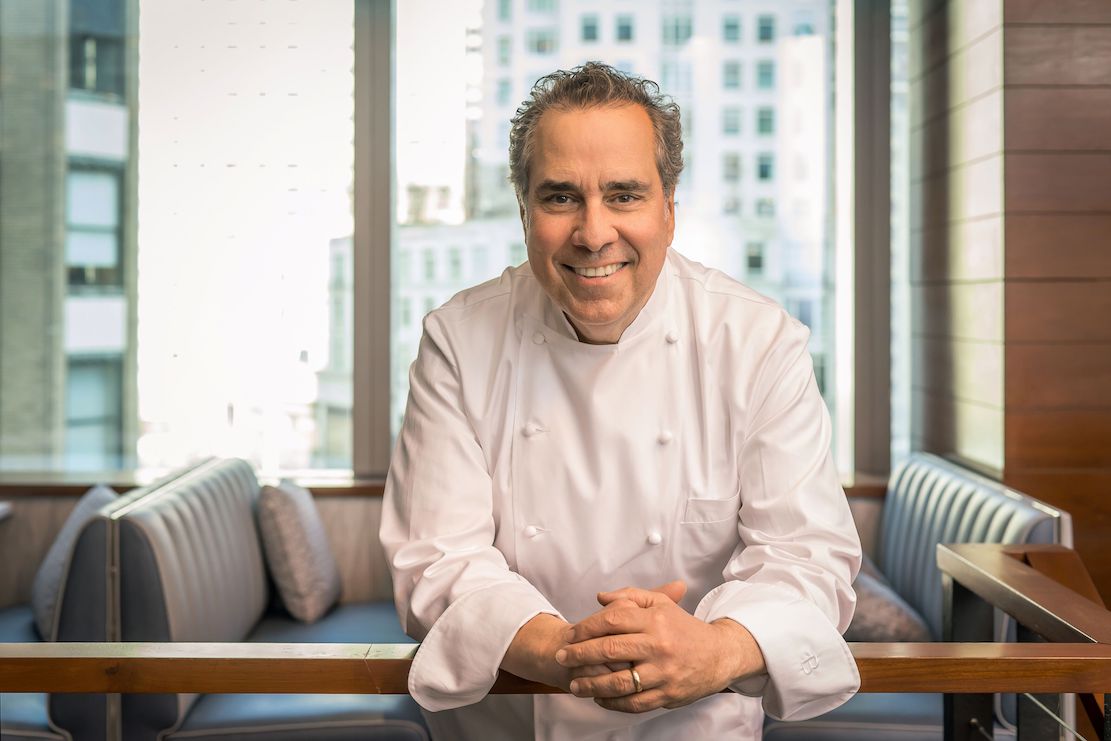 Its
replacement was another steakhouse, Porter House,
which not only looked more conventional, though of
a very fine polish, but had the expertise of
chef-operator Michael Lomonaco, whose bona fides
include residence at some of New York’s grandest,
high-profile restaurants, including `21’ and
Windows on the World (from which he escaped on
9/11 by stopping on the ground floor for five
minutes to have his eyeglasses fixed).
Its
replacement was another steakhouse, Porter House,
which not only looked more conventional, though of
a very fine polish, but had the expertise of
chef-operator Michael Lomonaco, whose bona fides
include residence at some of New York’s grandest,
high-profile restaurants, including `21’ and
Windows on the World (from which he escaped on
9/11 by stopping on the ground floor for five
minutes to have his eyeglasses fixed).
Lomonaco is as much a field
marshal as he is a chef who knows what his
clientele wants and is willing to pay for as long
as it’s of the highest quality. Add to this a
truly spectacular panorama overlooking Columbus
Circle and Central Park and you have a restaurant
that is uniquely New York in style and substance.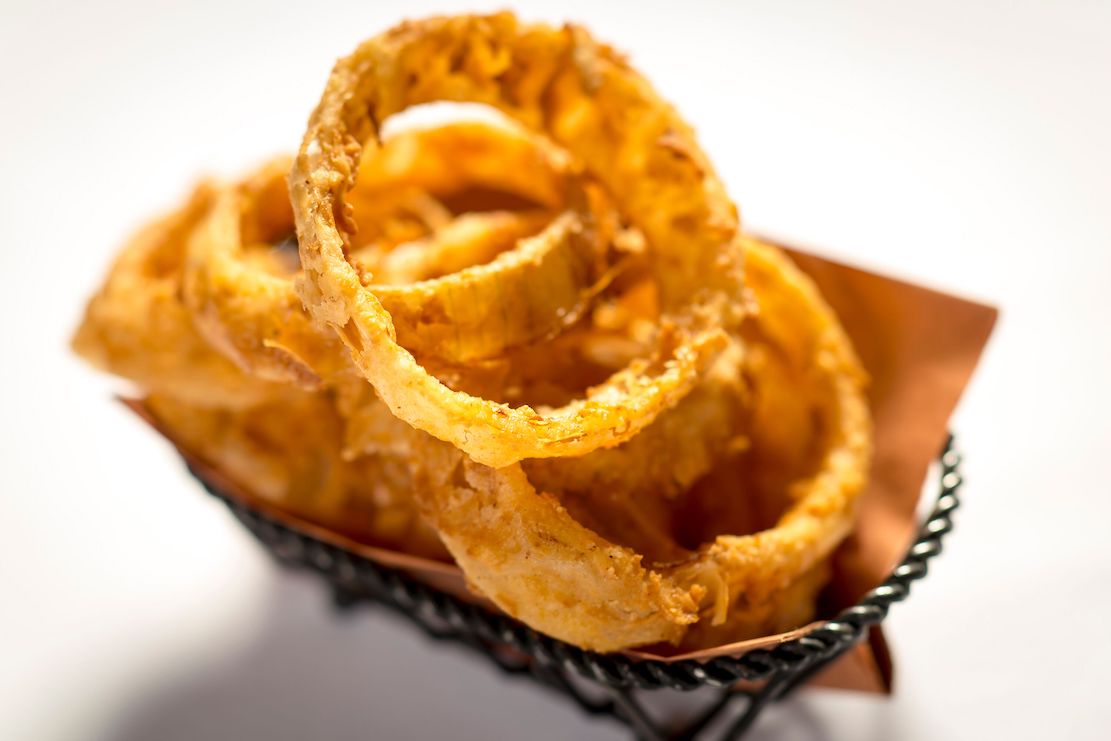
The reception is always
gregarious for both regulars and newcomers.
There’s a swank, big bar up front with shadowy
booths and bartenders who know how to make classic
cocktails the right way The tables in the dining
room, which was wholly redecorated a couple of
years ago, are large and well set; new chandeliers
cast a fine glow from dusk through evening, when
the magical lights of the city blink on across
Central Park West. The wine list is substantial in
every category, though not cheap and I’d like to
see more bottles under $100.
Whenever
I’ve been to Porter House, whose name is as
straightforward as the menu, Lomonaco has always
been in service, walking through the dining room
to welcome newcomers and to be detained by
regulars who have plenty of stories to tell him
and many questions to ask. Chef de cuisine Michael
Ammirati has been with him since the beginning,
so consistency is assured.
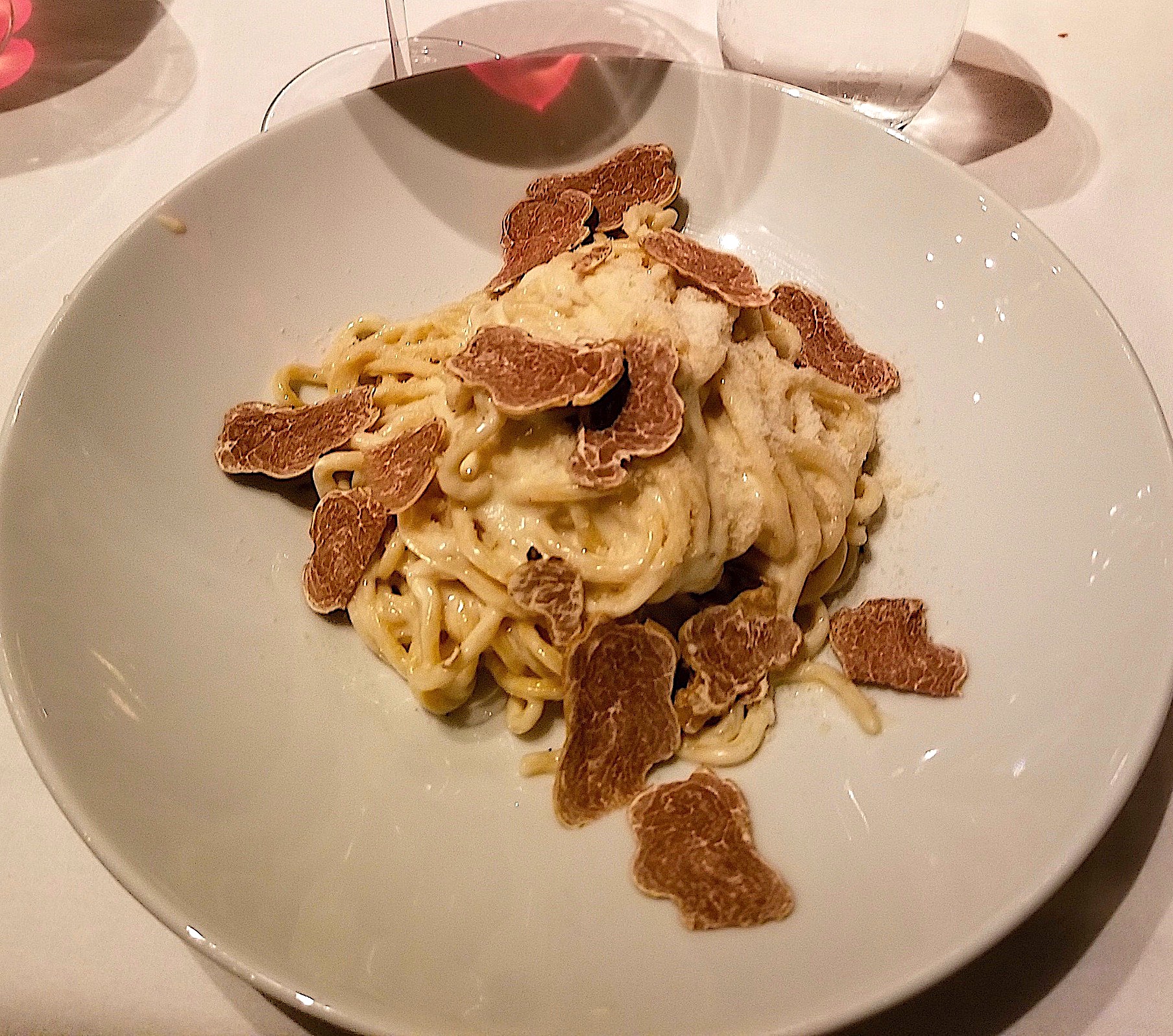 Porter House’s menu
does not stray from the sacrosanct formulas of the
steakhouse genre, though there is no sense of a
kitchen simply going through the motions of
turning out its 50,000th dish of creamed spinach.
Case in point are the onion rings (above): Had
Lomonaco invented them, they would be hailed as a
New York original; instead he has perfected them
as big wide ribbons of crunchiness from a
well-seasoned batter and the sweetness of the
onions within. No one does them better.
Porter House’s menu
does not stray from the sacrosanct formulas of the
steakhouse genre, though there is no sense of a
kitchen simply going through the motions of
turning out its 50,000th dish of creamed spinach.
Case in point are the onion rings (above): Had
Lomonaco invented them, they would be hailed as a
New York original; instead he has perfected them
as big wide ribbons of crunchiness from a
well-seasoned batter and the sweetness of the
onions within. No one does them better.
Certainly the crab cakes rank
among the best in town, made from jumbo lump crab
with a tangy tartare sauce ($27), as does the very
flavorful slab of bacon ($19), which does not have
that overly salty taste you often find. A
simple shrimp cocktail of U8-size shrimp ($28) is
simply delicious, the shrimp as sweet as if
fattened on corn. They come with Green Goddess
dressing and cocktail sauce. The
artisanal charcuterie board of Mangalitsa ham,
prosciutto, speck
and cacciatorino
sausage ($21) easily feeds two, and the creamy sea
scallops roasted with capers, croutons, lemon and
celery root and lavished with brown butter ($26)
are as good as at any French restaurant in the
city.
At the moment Porter House is
serving white truffles over pasta or risotto
($95), and they don’t skimp on the shavings of
exceptionally aromatic truffles (above). I
asked Lomonaco if he can get such high quality
truffles throughout the season, and he answered
that the chief supplier, Urbani, is just a few
blocks away and is a good friend of the house.
Our
table of four shared a massive porterhouse for two
(we demolished it) and a fine New York strip, all
cooked with a good searing on the outside.
Colorado lamb chops with mint leaf salad ($58)
were good, if not out of the ordinary. Lomonaco
has added Japanese wagyu to the menu at $225 for
12 ounces, if such an extravagance is your wont,
as well as a two-pound butter-poached lobster with
a fricassée of fennel, leeks and carrots ($75).
I could make a meal of those
onion rings ($12) and happily trade the creamed
spinach ($12) for a potato. On the other hand, the
French fries ($12) are so good, they are well
worth sharing. The key here, as noted, is the high
quality of the ingredients and the sense that
producing everything on the menu thousands of
times has led to precision rather than the same
old thing.
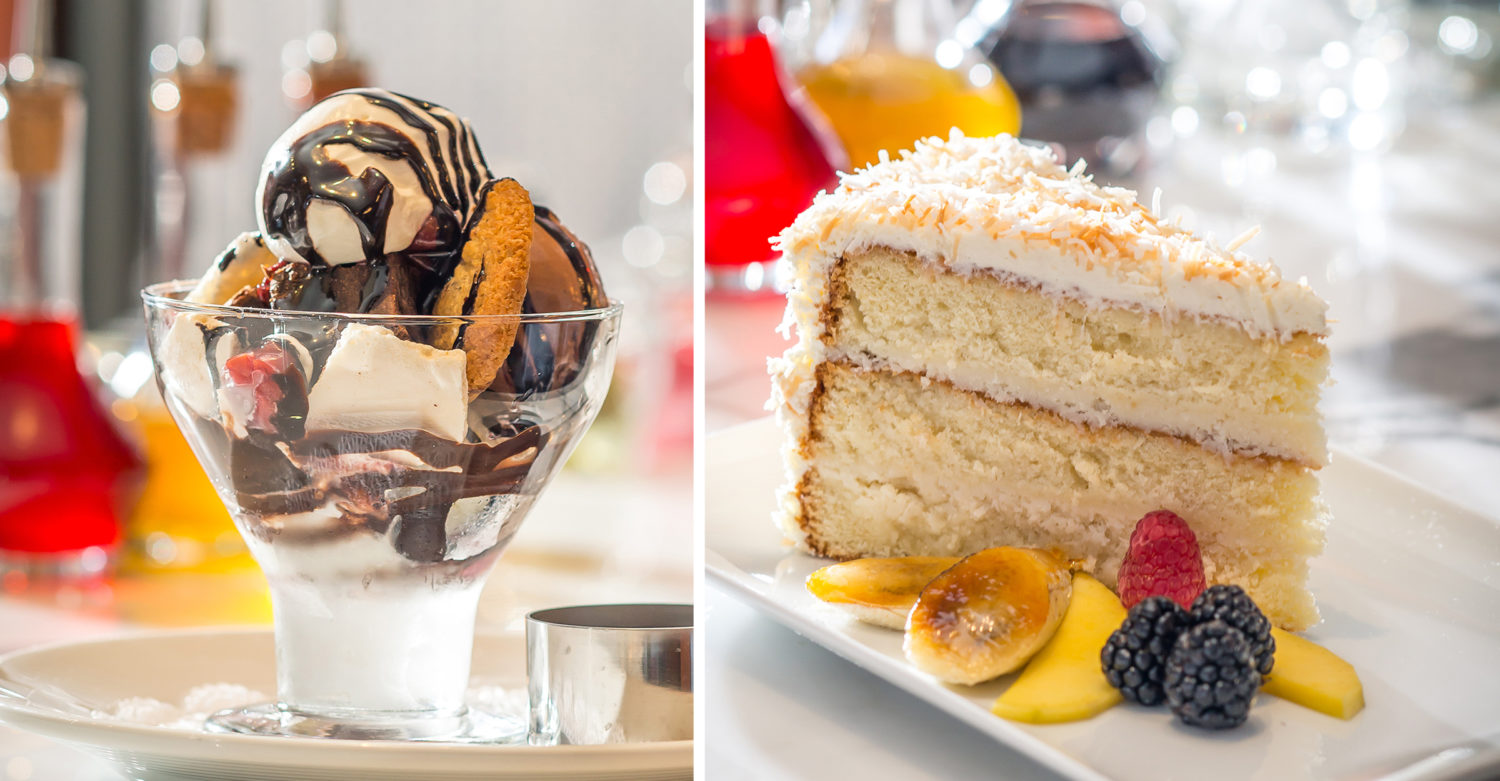 This is a
steakhouse, so Wayne Harley Brachman’s desserts
are going to be tremendous in size. That means
the chocolate blackout cake ($16), dense but
moist, is big enough to share with a table of four
or more. The apple crostata with
caramel gelato and butterscotch sauce ($14) and
the seven-layer South Carolina coconut cake ($16)
are also meant for several forks. Or go with the
hot cookie plate ($14) and kid yourself that it’s
a lightweight dessert. Or go whole hog with the
ice cream sundae with chocolate fudge and
maple-soaked walnuts (12).
This is a
steakhouse, so Wayne Harley Brachman’s desserts
are going to be tremendous in size. That means
the chocolate blackout cake ($16), dense but
moist, is big enough to share with a table of four
or more. The apple crostata with
caramel gelato and butterscotch sauce ($14) and
the seven-layer South Carolina coconut cake ($16)
are also meant for several forks. Or go with the
hot cookie plate ($14) and kid yourself that it’s
a lightweight dessert. Or go whole hog with the
ice cream sundae with chocolate fudge and
maple-soaked walnuts (12).
The service staff is well
co-ordinated, though it’s not always easy to tell
who’s a waiter or a busboy, and they get a bit lax
after 9:30.
Porter
House thrives for all sorts of logistical
reasons—access to thousands of Time-Warner’s
tenants, its location in a primary nexus of New
York’s West Side, proximity to Carnegie Hall,
Lincoln Center and the Theater District and a
year-round flow of tourists who come to visit the
building—so that the restaurant being set on the
fourth floor has become part of the experience.
Lomonaco has also opened a Hudson Yards Grill in
the cavernous Hudson Yards skyscrapers, which has
its own problems of accessibility, and the future
of that development is in considerable flux. But
Porter House, by giving its guests everything they
expect and doing it in one of the grandest
locations in the city, has made it a very classy
midtown icon.
Open for lunch and dinner daily.
By John Mariani
FOR WINTER

It used to be that, with the exception of a few gift bottles shaped like Napoleon or Elvis, liquors didn’t change much from year to year. Fans of, say, Dewar’s Scotch or Bacardi rum or Stoli vodka expected and wanted them to taste the same with every bottle. But marketing spirits has become enormous business, sometimes just by putting the same old liquor in a brand new bottle. But the most enticing spirits in the market are very new, often depending on “finishes” in various oak barrels previously used for wines of Sherry or even other spirits. Others are special editions from what have been deemed “vintage years,” even though vintages were once disdained for the same reason I gave about fans wanting their favorites always to taste the same. Here are some of most interesting new spirits I’ve found, not just those that somehow were “discovered” tucked away in an aging barn.
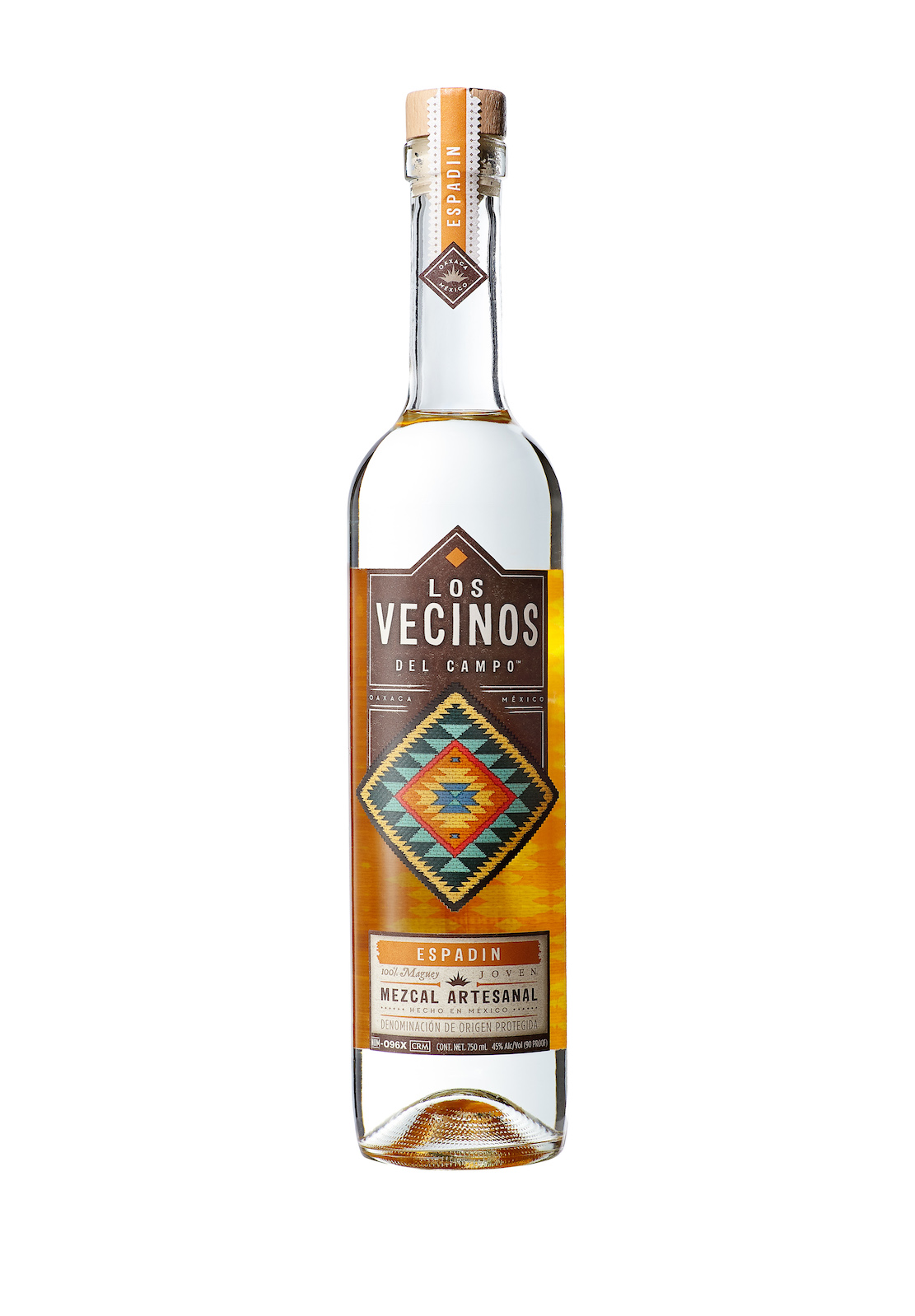 CASA SAN
MATIAS LOS VECINOS DEL CAMPO MEZCAL ($34)—I
won’t get into the myths and differences between
tequila and mezcal. Suffice it to say that Casa
San Matias is one of the oldest distilleries in
Mexico—130 years—and is nevertheless as modern as
any, now admirably invested in reducing its carbon
footprint. The Los Vecinos del Campo range of
mezcals is made in the Valles Centrales of Oaxaca
by “master mezcaleros”
who hand harvest and roast the agave plant.
This expression, called Espadin, is 90 proof and
is far more subtle and less smoky than others, so
it has more spice in the nose and on first sip,
with good fruit to follow. Good in cocktails at
this price.
CASA SAN
MATIAS LOS VECINOS DEL CAMPO MEZCAL ($34)—I
won’t get into the myths and differences between
tequila and mezcal. Suffice it to say that Casa
San Matias is one of the oldest distilleries in
Mexico—130 years—and is nevertheless as modern as
any, now admirably invested in reducing its carbon
footprint. The Los Vecinos del Campo range of
mezcals is made in the Valles Centrales of Oaxaca
by “master mezcaleros”
who hand harvest and roast the agave plant.
This expression, called Espadin, is 90 proof and
is far more subtle and less smoky than others, so
it has more spice in the nose and on first sip,
with good fruit to follow. Good in cocktails at
this price.
EL
TESORO EXTRA AÑEJO TEQUILA ($100)—El
Tesoro makes six different tequilas, 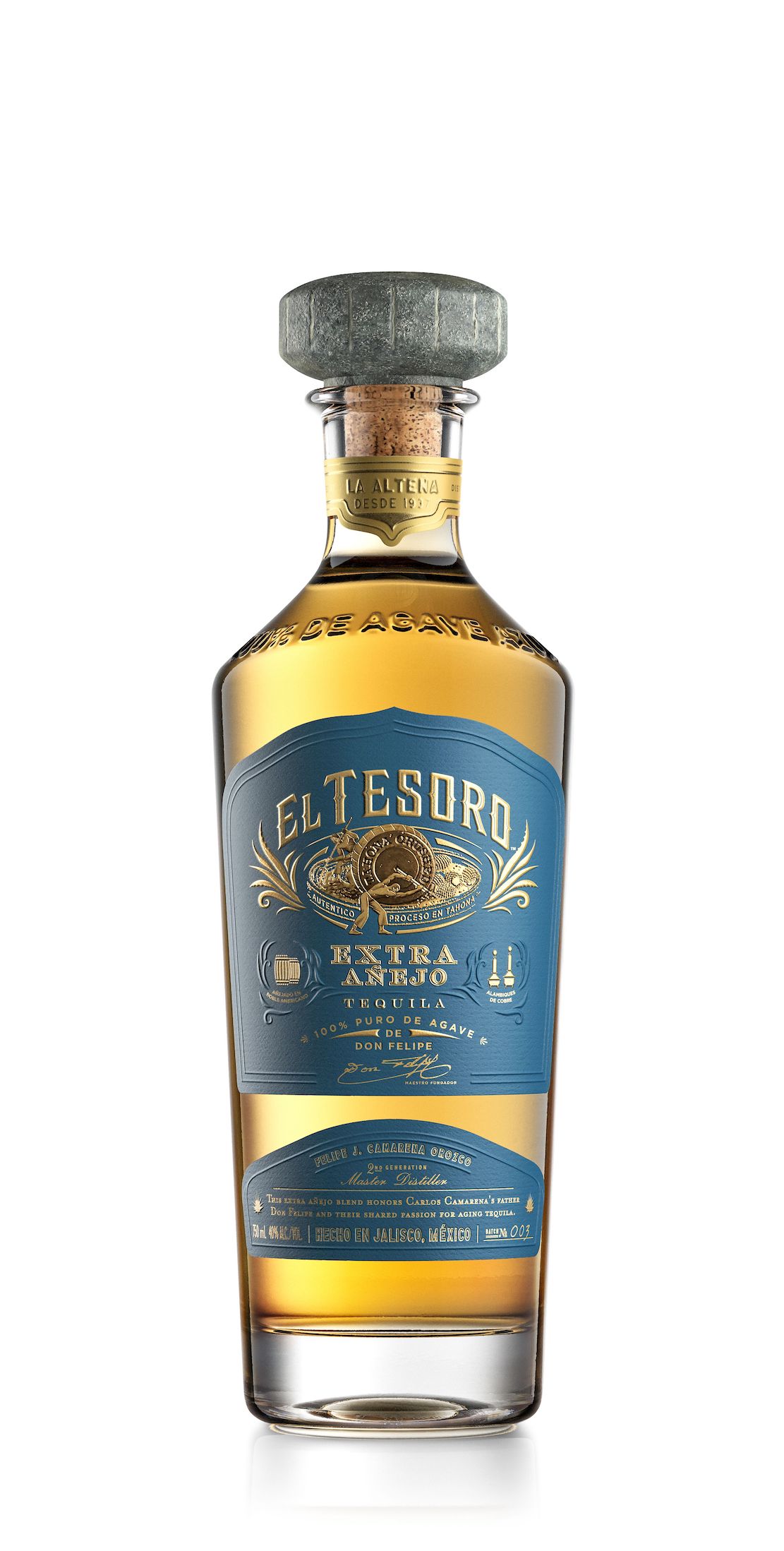 from Blanco ($45) to Single Barrel
Reposado ($55) and Paradiso ($130), which is aged
for five years in former Cognac bottles. This new
release, made by Don Felipe J. Camarena Orozco’s
son and aged in bourbon barrels for four or five
years, is a homage to his father, who believed in
longer aging for more complexity and elegance. It
is released at 80 proof, which is not out of the
ordinary, but there is a richer caramel sweetness
component than the company’s three-year aged
Añejo. Not to be used as a component for a
margarita, this is to be enjoyed with friends
unaccustomed to a tequila of this refinement.
from Blanco ($45) to Single Barrel
Reposado ($55) and Paradiso ($130), which is aged
for five years in former Cognac bottles. This new
release, made by Don Felipe J. Camarena Orozco’s
son and aged in bourbon barrels for four or five
years, is a homage to his father, who believed in
longer aging for more complexity and elegance. It
is released at 80 proof, which is not out of the
ordinary, but there is a richer caramel sweetness
component than the company’s three-year aged
Añejo. Not to be used as a component for a
margarita, this is to be enjoyed with friends
unaccustomed to a tequila of this refinement.
BAYOU SELECT BARREL RESERVE RUM ($28)—Here’s one of a handful of American rums distilled in Louisiana, in this case Lacassine, where sugar cane has been grown since the 1700s. Debuting in 2012, Bayou Rum Distillery produced its first bottlings according to state-of-the-art methods, while also hearkening back to the traditional Solera method of vertically stacking the barrels into a pyramid, by which, over time, barrels are topped off with older spirits and, last of all, with the oldest. This is a rum dark in color, which usually means a strong molasses taste, but I found this more subtle, more like a well-aged bourbon but retaining the distinct taste of rum. I even used it in my daiquiri recipe for which I usually use amber rum, wondering if Bayou might be too bold, but it made a beauty of a cocktail.
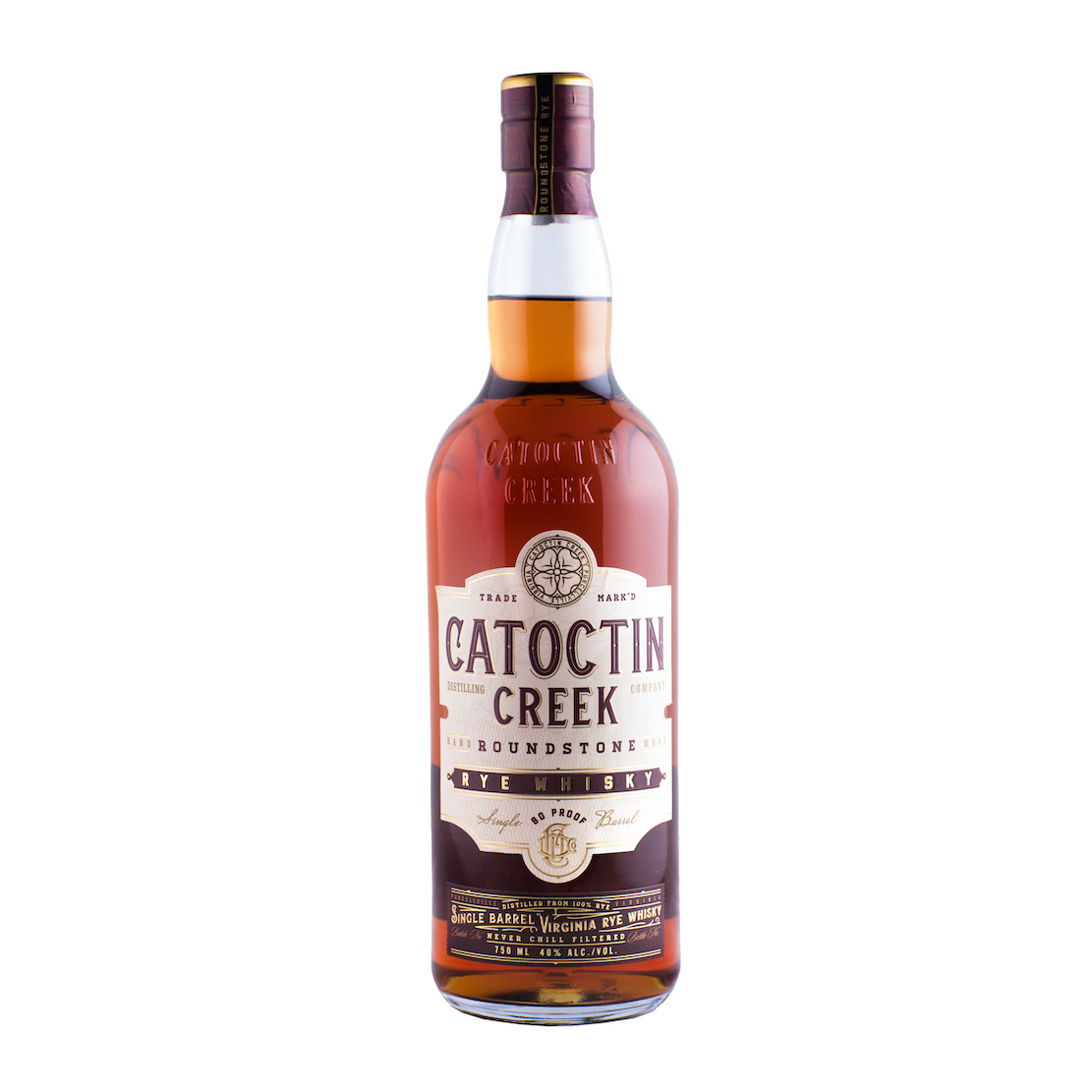 CATOCTIN
CREEK ROUNDSTONE RYE WHISKEY
($53)—Catoctin makes three 100% ryes, and this is
its highest proof, at 92; they make another at 80
proof ($45). It has power but finesse with a
pleasing burn that follows some rich butterscotch
notes and a good deal of woodsy flavors. It’s made
by Becky and Scott Harris (she was a chemical
engineer, he a businessman) in Purcellville,
Virginia, which sounds like a real nice place to
make a real good American whiskey.
CATOCTIN
CREEK ROUNDSTONE RYE WHISKEY
($53)—Catoctin makes three 100% ryes, and this is
its highest proof, at 92; they make another at 80
proof ($45). It has power but finesse with a
pleasing burn that follows some rich butterscotch
notes and a good deal of woodsy flavors. It’s made
by Becky and Scott Harris (she was a chemical
engineer, he a businessman) in Purcellville,
Virginia, which sounds like a real nice place to
make a real good American whiskey.
CARIBOU CROSSING SINGLE BARREL CANADIAN
WHISKEY ($58)—Canadian whiskeys have
taken a big leap from the shots-and-beer image of
neighborhood bars, and Caribou Crossing shows why.
Selected from 200,000 barrels purchased from a
defunct Canadian distillery, this is said to be
the first single barrel Canadian whiskey, bottled
at 80 proof. I could certainly not tell if the
grain used was rye or corn, but I’m guessing some
of both, blended from various barrels whose grain
contents have probably been lost in the mists of
time. In
any case, it’s impressive and comes in a splendid
bottle with a pewter stopper of a caribou that
would make a nice Monopoly piece.
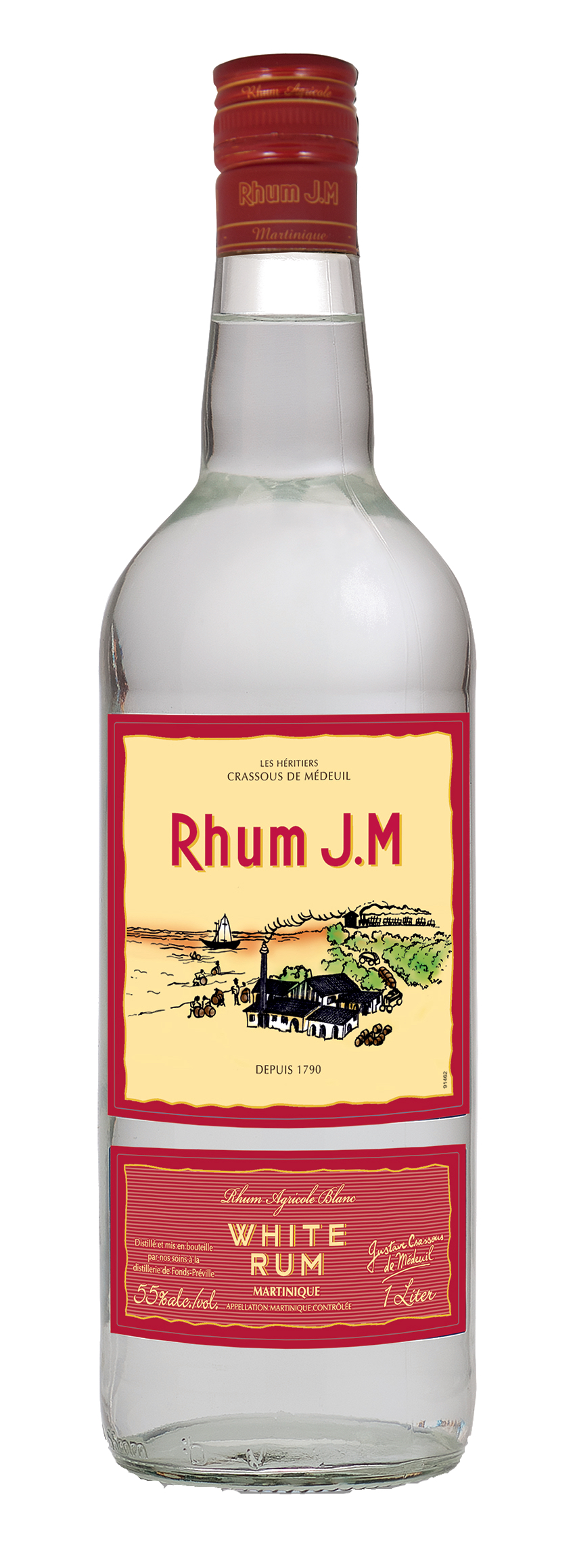
RHUM J.M
($38)—Rhum J.M makes a line of rums, including a
shrubb liqueur with the flavors of dried bitter
orange peels and spices. But their bottling
distilled at 110 proof is one of the best white
rums in the market because it has more flavor than
most, though less than a gold or amber rum. It
will make a very fine rum cocktail, especially one
where you don't want the sugar and citrus to
overpower the flavor of rum.
MOUNT
GAY
XO RESERVE CASK BARBADOS RUM ($190)
—Made from select reserves eight to 15 years old,
then aged in 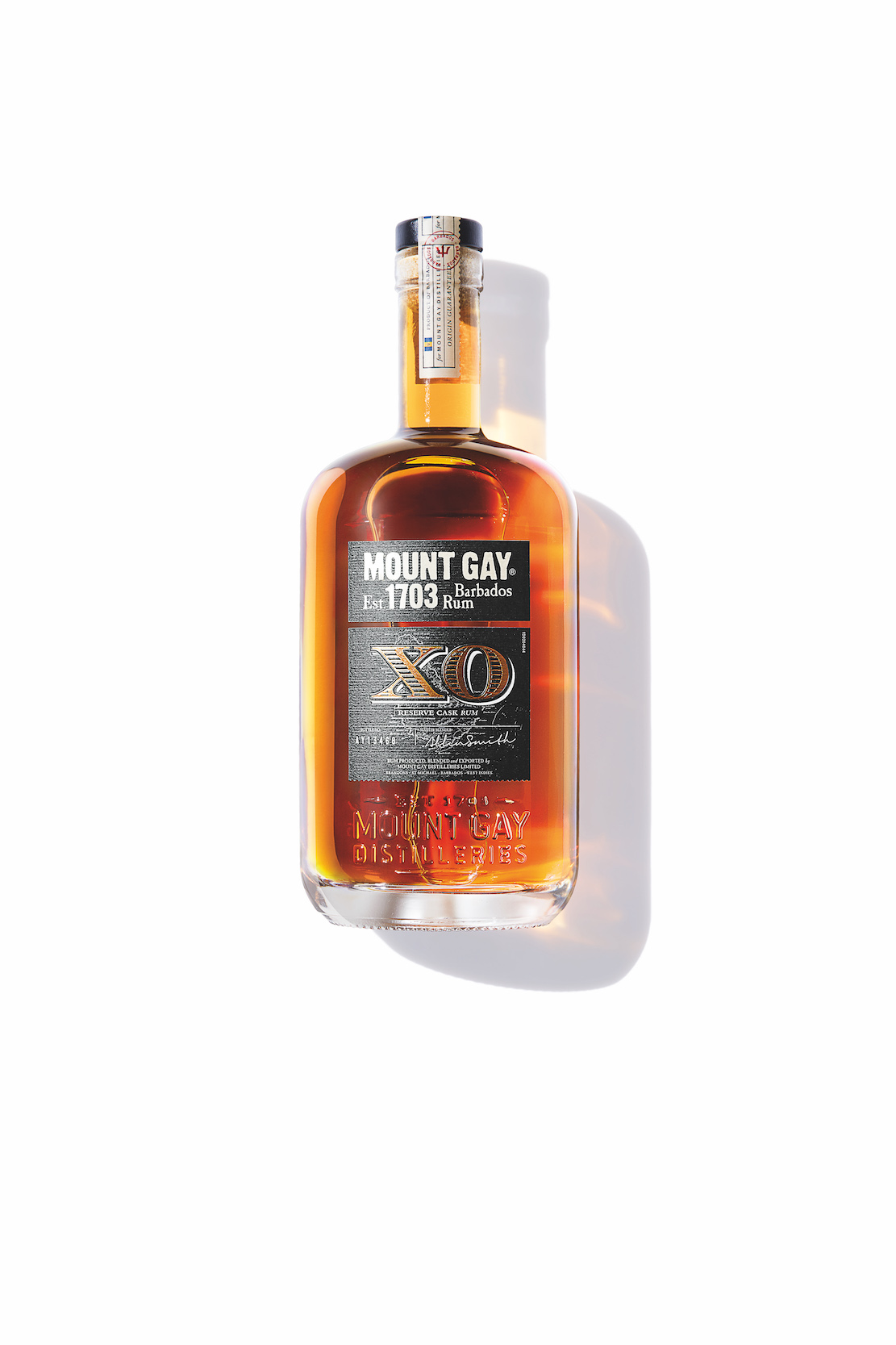 charred
ex-American whiskey and bourbon barrels to round
out the distillation. It’s a finer version of
Mount Gay’s basic line and offers more sipping
pleasure before dinner with a splash of water and
a slice of lemon or after dinner by itself. The
balance of fruit and acid is buoyed by a richness
of spice and light sweetness. Another new bottling
from Mount Gay is its “1703” ($110), made by new
Master Blender Trudiann Branker, with only 4,920
bottles produced, from the 2009 vintage and aged
10 years in “virgin ex-whiskey casks” (whatever
that means) for six months.
charred
ex-American whiskey and bourbon barrels to round
out the distillation. It’s a finer version of
Mount Gay’s basic line and offers more sipping
pleasure before dinner with a splash of water and
a slice of lemon or after dinner by itself. The
balance of fruit and acid is buoyed by a richness
of spice and light sweetness. Another new bottling
from Mount Gay is its “1703” ($110), made by new
Master Blender Trudiann Branker, with only 4,920
bottles produced, from the 2009 vintage and aged
10 years in “virgin ex-whiskey casks” (whatever
that means) for six months.
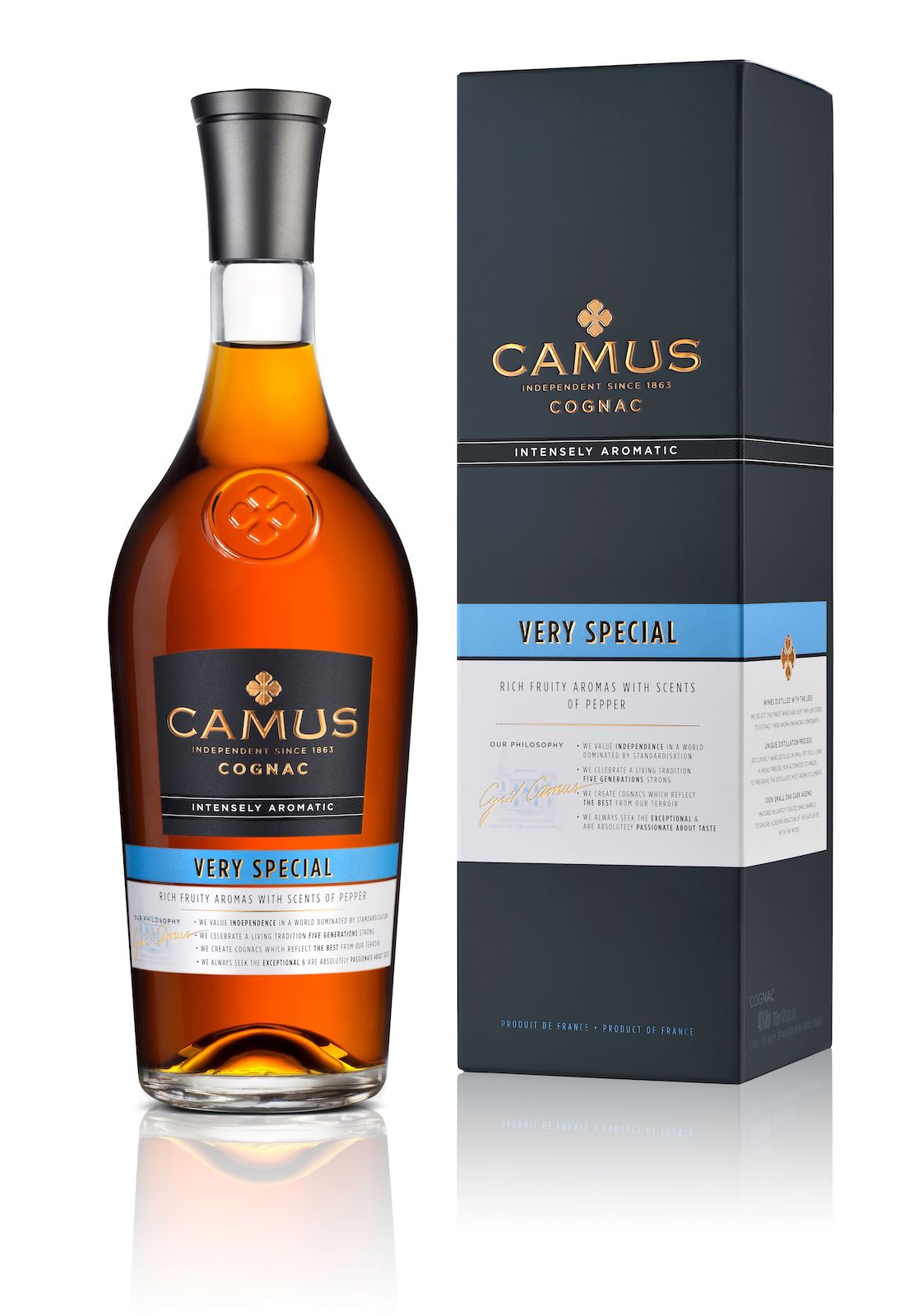 CAMUS VERY SPECIAL ($32)
—This is an amazing price for a solidly knit
Cognac with depth and floral aromas that tell you
everything distinctive about Cognac, which is
distilled from grapes, not grain. Camus distills
it on the lees and ages it in fine-grained French
oak. Camus has been making fine Cognacs since
1863, and its recent innovations, especially its
Borderies spirits, towards a more intense,
fruit-driven style are very much an applaudable
move forward.
CAMUS VERY SPECIAL ($32)
—This is an amazing price for a solidly knit
Cognac with depth and floral aromas that tell you
everything distinctive about Cognac, which is
distilled from grapes, not grain. Camus distills
it on the lees and ages it in fine-grained French
oak. Camus has been making fine Cognacs since
1863, and its recent innovations, especially its
Borderies spirits, towards a more intense,
fruit-driven style are very much an applaudable
move forward.
REMY
MARTIN TERCET ($110) —At 84 proof, this
is Remy’s highest proof 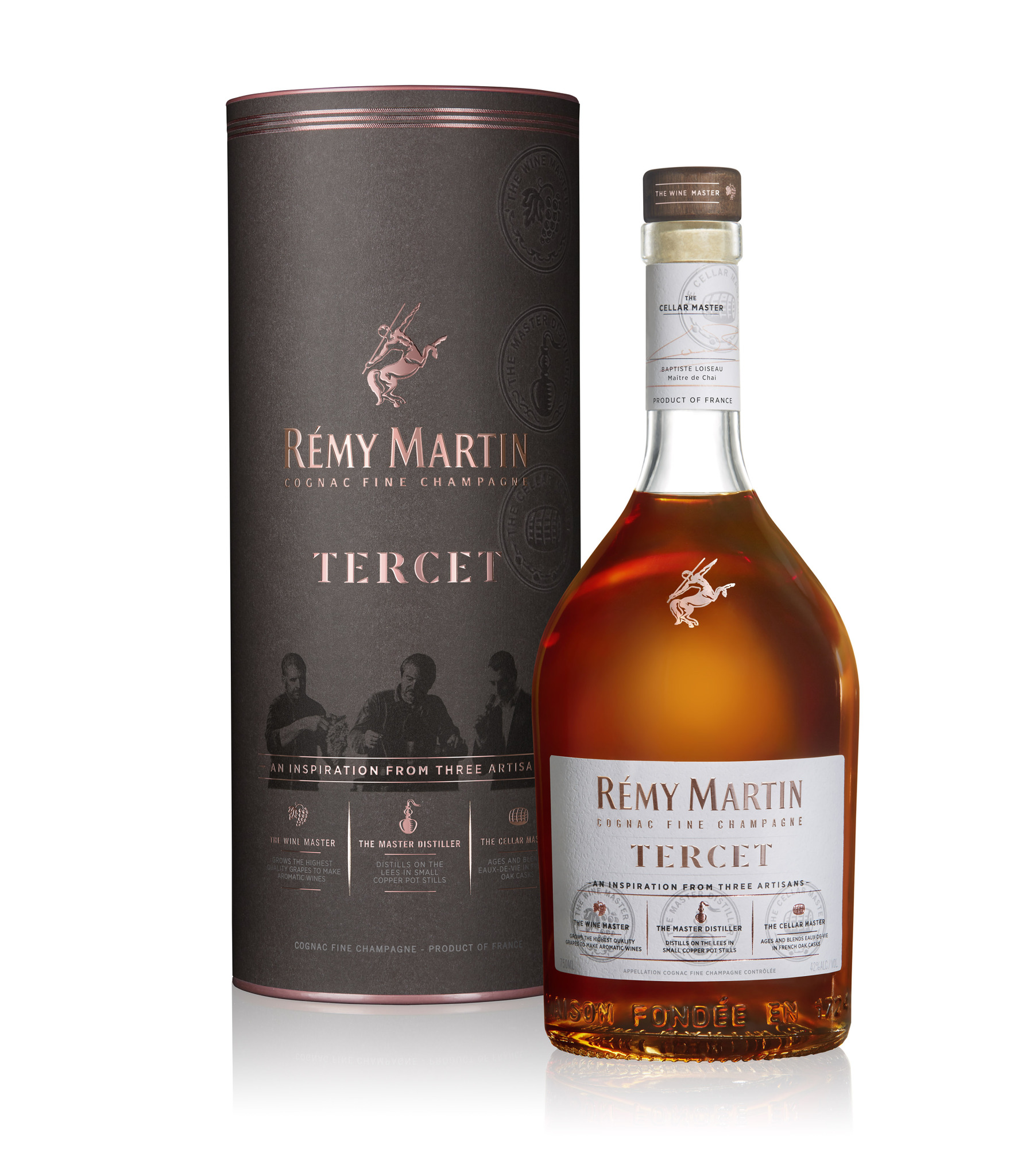 Cognac,
called a “tercet” because three artisans crafted
it—the Wine Master Francois Nadeau, the Master
Distiller Jean-Marie Bernard and Cellar Master
Baptiste Loiseau, using special eaux-de-vie aiming
for a lighter, fruit-forward expression that is
deliberately “emancipated” from the traditional
Remy Martin style.
Cognac,
called a “tercet” because three artisans crafted
it—the Wine Master Francois Nadeau, the Master
Distiller Jean-Marie Bernard and Cellar Master
Baptiste Loiseau, using special eaux-de-vie aiming
for a lighter, fruit-forward expression that is
deliberately “emancipated” from the traditional
Remy Martin style.
❖❖❖

DipClip is a cup
holder for fast-food dipping sauces intended for
in-car use by clipping it onto your AC vent.

AH, YES, ROLLER RINKS WERE ALWAYS
KNOWN FOR THEIR GREAT PIZZA
"At
Paulie Gee’s Slice Shop (110 Franklin
St., Brooklyn, $3.50-$5), in
Greenpoint, which opened in 2018, there are laminate
booths, glittery lime-green vinyl stools, and orange
plastic trays. You can buy an ice-cold bottle of
Coke from a vintage vending machine. Eating there
makes me feel like a Carter-era teen-ager who’s
saved up her allowance to buy a snack after a spin
around the roller rink.”—Hannah Goldfield, “Paulie Gee’s,
F&F Pizzeria, and New York City’s Slice
Renaissance,” The
New Yorker (Nov 29, 2019).
Any of John Mariani's books below may be ordered from amazon.com.
 The Hound in Heaven
(21st Century Lion Books) is a novella, and
for anyone who loves dogs, Christmas, romance,
inspiration, even the supernatural, I hope you'll find
this to be a treasured favorite. The story
concerns how, after a New England teacher, his wife and
their two daughters adopt a stray puppy found in their
barn in northern Maine, their lives seem full of promise.
But when tragedy strikes, their wonderful dog Lazarus and
the spirit of Christmas are the only things that may bring
his master back from the edge of despair.
The Hound in Heaven
(21st Century Lion Books) is a novella, and
for anyone who loves dogs, Christmas, romance,
inspiration, even the supernatural, I hope you'll find
this to be a treasured favorite. The story
concerns how, after a New England teacher, his wife and
their two daughters adopt a stray puppy found in their
barn in northern Maine, their lives seem full of promise.
But when tragedy strikes, their wonderful dog Lazarus and
the spirit of Christmas are the only things that may bring
his master back from the edge of despair. WATCH THE VIDEO!
“What a huge surprise turn this story took! I was completely stunned! I truly enjoyed this book and its message.” – Actress Ali MacGraw
“He had me at Page One. The amount of heart, human insight, soul searching, and deft literary strength that John Mariani pours into this airtight novella is vertigo-inducing. Perhaps ‘wow’ would be the best comment.” – James Dalessandro, author of Bohemian Heart and 1906.
“John Mariani’s Hound in Heaven starts with a well-painted portrayal of an American family, along with the requisite dog. A surprise event flips the action of the novel and captures us for a voyage leading to a hopeful and heart-warming message. A page turning, one sitting read, it’s the perfect antidote for the winter and promotion of holiday celebration.” – Ann Pearlman, author of The Christmas Cookie Club and A Gift for my Sister.
“John Mariani’s concise, achingly beautiful novella pulls a literary rabbit out of a hat – a mash-up of the cosmic and the intimate, the tragic and the heart-warming – a Christmas tale for all ages, and all faiths. Read it to your children, read it to yourself… but read it. Early and often. Highly recommended.” – Jay Bonansinga, New York Times bestselling author of Pinkerton’s War, The Sinking of The Eastland, and The Walking Dead: The Road To Woodbury.
“Amazing things happen when you open your heart to an animal. The Hound in Heaven delivers a powerful story of healing that is forged in the spiritual relationship between a man and his best friend. The book brings a message of hope that can enrich our images of family, love, and loss.” – Dr. Barbara Royal, author of The Royal Treatment.
 |
The Encyclopedia of American Food and Drink by John F. Mariani (Bloomsbury USA, $35) Modesty forbids me to praise my own new book, but let me proudly say that it is an extensive revision of the 4th edition that appeared more than a decade ago, before locavores, molecular cuisine, modernist cuisine, the Food Network and so much more, now included. Word origins have been completely updated, as have per capita consumption and production stats. Most important, for the first time since publication in the 1980s, the book includes more than 100 biographies of Americans who have changed the way we cook, eat and drink -- from Fannie Farmer and Julia Child to Robert Mondavi and Thomas Keller. "This book is amazing! It has entries for everything from `abalone' to `zwieback,' plus more than 500 recipes for classic American dishes and drinks."--Devra First, The Boston Globe. "Much needed in any kitchen library."--Bon Appetit. |
"Eating Italian will never be the same after reading John Mariani's entertaining and savory gastronomical history of the cuisine of Italy and how it won over appetites worldwide. . . . This book is such a tasteful narrative that it will literally make you hungry for Italian food and arouse your appetite for gastronomical history."--Don Oldenburg, USA Today. "Italian
restaurants--some good, some glitzy--far
outnumber their French rivals. Many of
these establishments are zestfully described
in How Italian Food Conquered the World, an
entertaining and fact-filled chronicle by
food-and-wine correspondent John F.
Mariani."--Aram Bakshian Jr., Wall Street
Journal.
"Equal parts
history, sociology, gastronomy, and just
plain fun, How Italian Food Conquered the
World tells the captivating and delicious
story of the (let's face it) everybody's
favorite cuisine with clarity, verve and
more than one surprise."--Colman Andrews,
editorial director of The Daily
Meal.com. "A fantastic and fascinating
read, covering everything from the influence
of Venice's spice trade to the impact of
Italian immigrants in America and the
evolution of alta cucina. This book will
serve as a terrific resource to anyone
interested in the real story of Italian
food."--Mary Ann Esposito, host of PBS-TV's
Ciao
Italia. "John Mariani has written the
definitive history of how Italians won their
way into our hearts, minds, and
stomachs. It's a story of pleasure over
pomp and taste over technique."--Danny Meyer,
owner of NYC restaurants Union Square
Cafe, The Modern, and Maialino.
|
 |
 |
 |
 |
 |
 |
 |
 |
 Everett Potter's Travel Report:
Everett Potter's Travel Report: 
 Eating Las Vegas
JOHN CURTAS has been covering the Las Vegas
food and restaurant scene since 1995. He is
the co-author of EATING LAS VEGAS – The 50
Essential Restaurants (as well as
the author of the Eating Las Vegas web site: www.eatinglasvegas.
He can also be seen every Friday morning as
the “resident foodie” for Wake Up With the
Wagners on KSNV TV (NBC) Channel 3 in
Las Vegas.
Eating Las Vegas
JOHN CURTAS has been covering the Las Vegas
food and restaurant scene since 1995. He is
the co-author of EATING LAS VEGAS – The 50
Essential Restaurants (as well as
the author of the Eating Las Vegas web site: www.eatinglasvegas.
He can also be seen every Friday morning as
the “resident foodie” for Wake Up With the
Wagners on KSNV TV (NBC) Channel 3 in
Las Vegas.
MARIANI'S VIRTUAL GOURMET
NEWSLETTER is published weekly. Publisher: John Mariani. Editor: Walter Bagley. Contributing Writers: Christopher Mariani,
Robert Mariani, Misha Mariani, John A. Curtas, Gerry Dawes, Geoff Kalish,
and Brian Freedman. Contributing
Photographer: Galina Dargery. Technical
Advisor: Gerry
McLoughlin.
If you wish to subscribe to this
newsletter, please click here: http://www.johnmariani.com/subscribe/index.html
© copyright John Mariani 2019

